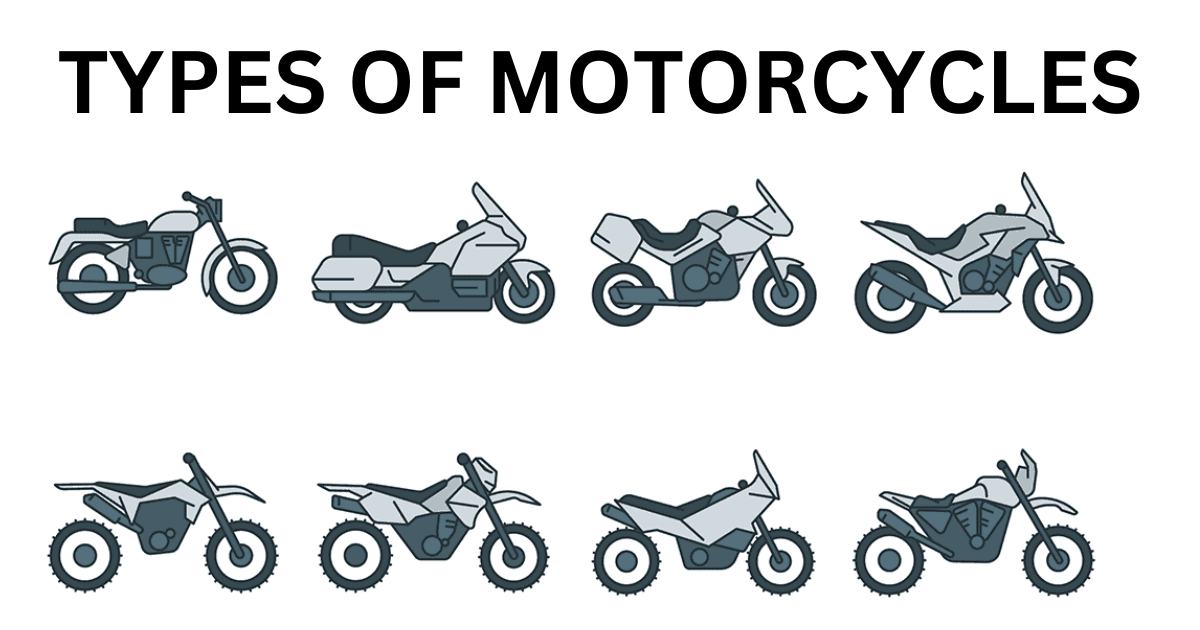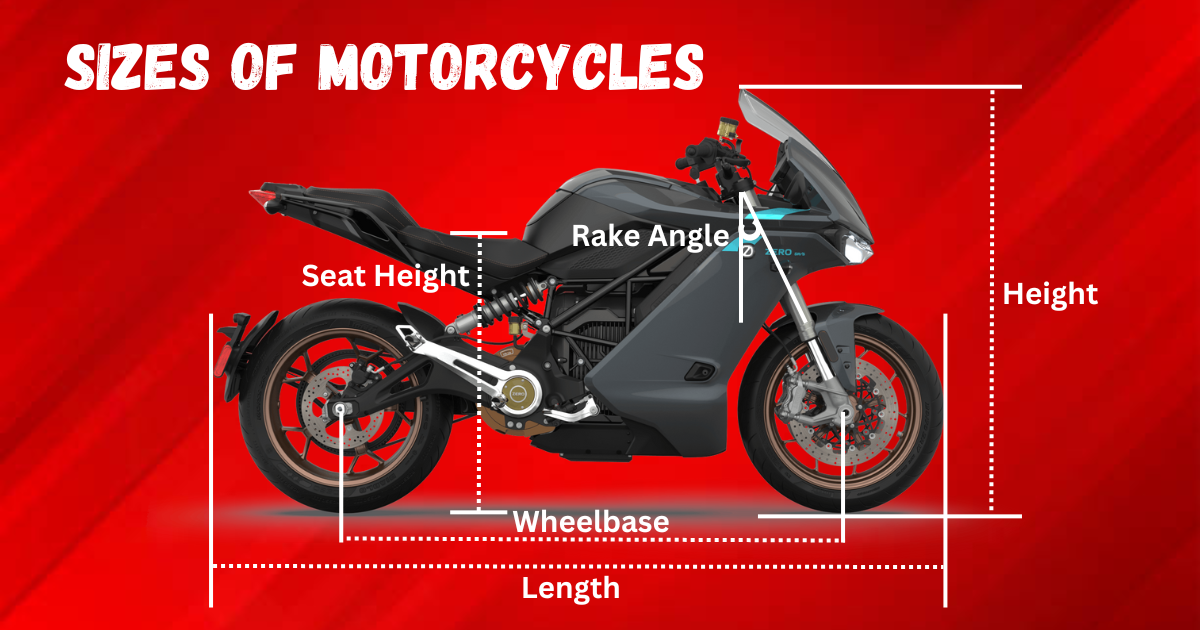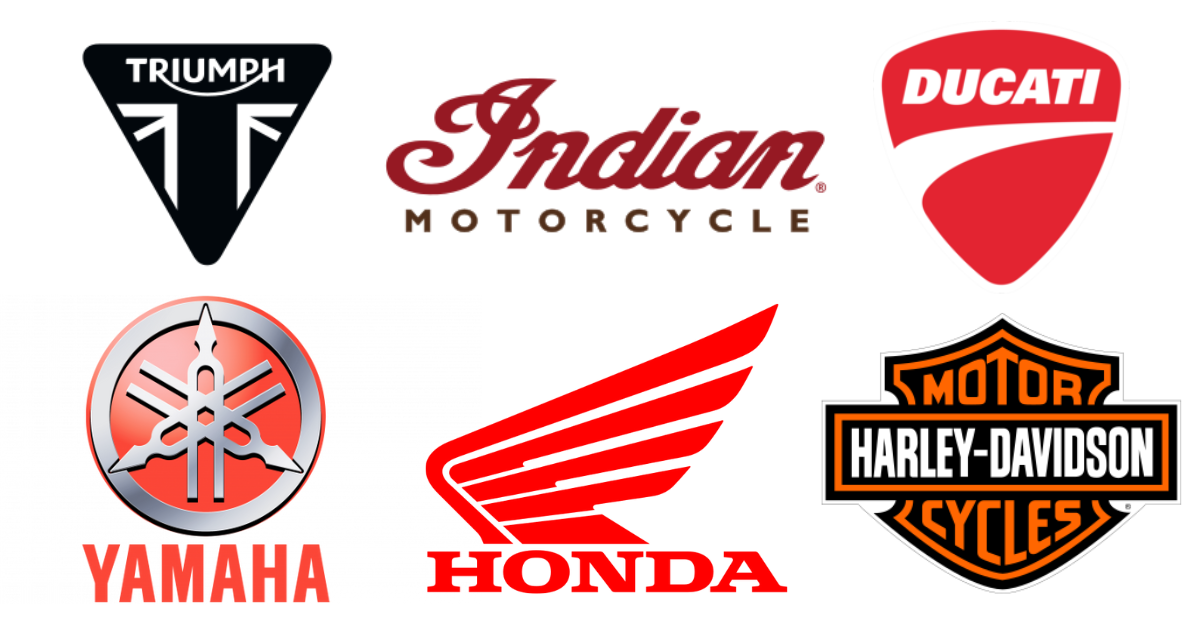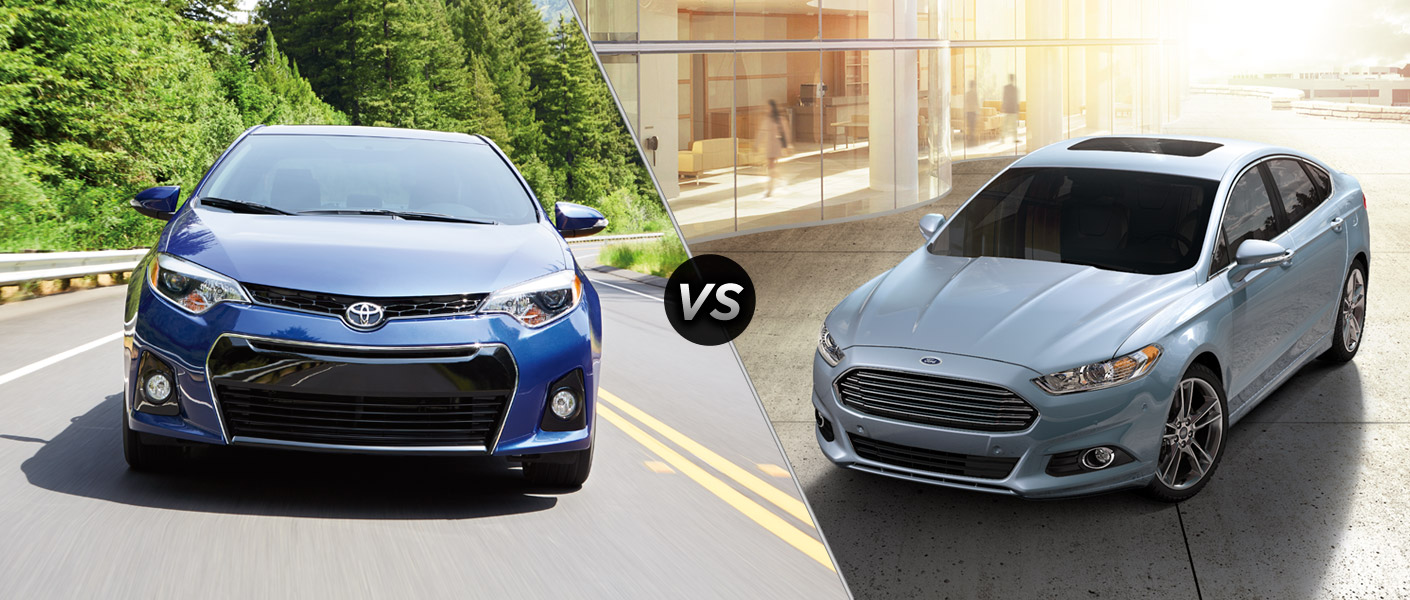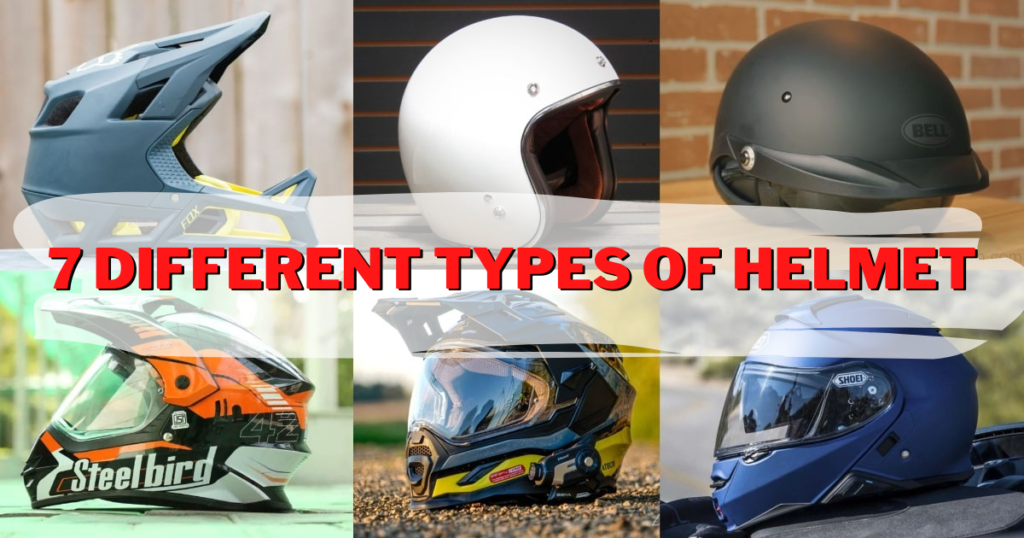
Choosing the right helmet to wear while riding a motorcycle can literally be a matter of life and death. We are also aware of its potential to make or break a traveler’s experience. In your search for the perfect helmet, whether it be online or in a store, we have some suggestions to help you stay safe.
For a beginner motorcyclist, the abundance of helmet options can be overwhelming, especially given the lifesaving responsibility placed on your choice. Selecting a helmet based on its aesthetics alone is simple, but you know that you need far more from your headgear.
There is now a variety of motorcycle helmet designs to choose from. Although they are all meant to keep you safe, different measures will do so to varying degrees.
Types of Motorcycle Helmets
It is up to you to decide which is the best, but you should learn as much as possible about them before making a decision. Let’s get familiar with these 7 common helmet types.
1. Full-Face Helmets
The full-face motorbike helmet provides the highest level of protection for the rider’s head and neck out of any other type of motorcycle helmet used for road riding. It’s a smart choice for trips that may take a while or go in unexpected directions. The term “street helmet” refers to this style of head protection, while “sports bike helmet” describes its primary use for riding in more extreme conditions.

Numerous designs are adaptable and work with a wide variety of motorcycles, roads, and speed limits. You’ll notice a difference based on the type of riding you do. This explains why there are full faces that work better for you than others.
Sport cyclists typically have a hunched posture, so it’s important that their helmets are designed to accommodate this. The chin bar on sports helmets is typically higher, and the eye port is angled slightly upwards toward the top of the helmet.
Pros:
- Protects the entire head.
- Protects from sun, wind, debris, dirt, bugs, and other objects.
- Eliminates the need for sunglasses or goggles.
- Tinted models provide anonymity.
Cons:
- Might be stuffy in summer.
- It may cause claustrophobia or isolation.
- Reduces hearing and visibility.
- If the rider wants to talk to others, it must be removed.
2. Modular Or Flip-Up
In comparison, modular helmets have some unique features. This second type of helmet is based on the availability of a three-quarters (3/4) helmet, also known as a flip-up helmet, which allows the chin strap and visor to lift. The visor on the modular helmet protects the eyes as well. As an added layer of safety, some models have a second visor on the inside.
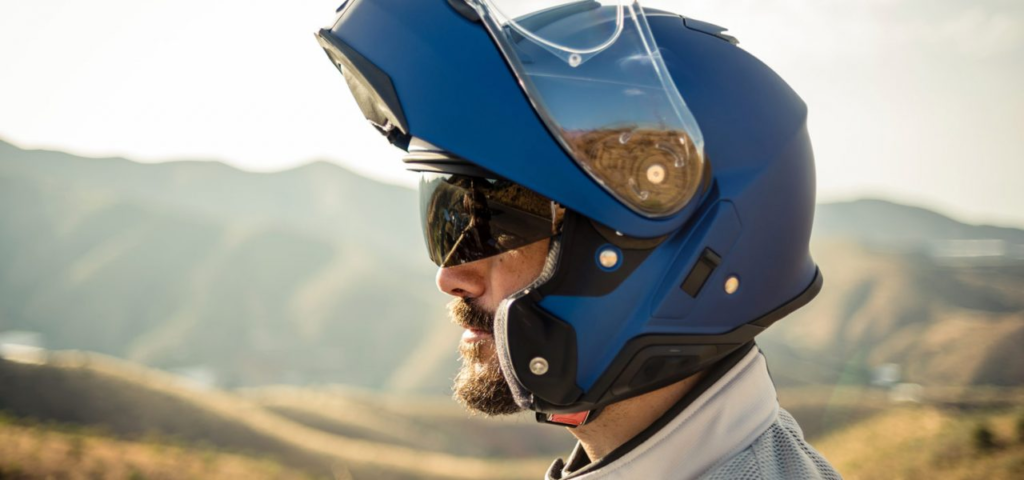
You can wear either a full-face or a three-quarters helmet or a combination of the two. Decide whether superior safety features or a new appearance with some added style and comfort is more important to you.
This comes with two major concessions:
- The extra hinge needed to flip up the visor on a modular helmet adds a little bit of weight, making them just a little bit heavier than full-face helmets.
- The modular helmet is popular among tourers, cruisers, and adventure riders due to its upright riding position. Eye cutouts are simpler, and the chin bar rests lower on the face. The anti-fog coating on the primary visor and Bluetooth speakers are both nice touches.
Pros:
- Converts from full-face to open-face with one button.
- Like an open-face helmet, it offers ventilation and comfort.
- Protects riders from the elements but lacks full-face helmet safety features.
- It’s versatile for cold and warm weather.
- Allows riders to chat, drink, and breathe without removing their helmets.
Cons:
- The hinges that pivot the visor and chin bar make it heavier than a full-face helmet.
- Detachable/flip-up chin bars weaken helmet structure during impact.
- High-speed rides and open chin bars are unsafe.
3. Open-Face Or 3/4
Open-face helmets have been a favorite of low-speed cyclists and scooter riders for a long time. They cover the sides, top, and back of the head but leave the face completely open to the wind. Since there is no chin section, open-face helmets offer much less protection in an accident. A flexible strap goes around the chin to keep them on your head.

The places they do cover are very well protected. In fact, they are made to have the same structure as full-face helmets, so they do a great job of keeping your head safe. People think that open-face helmets are just as safe as full-face helmets in the areas that they cover.
Since there is no chin bar, the weight is slightly less than that of a full-face helmet, but the difference isn’t very big. Also, because the helmet is open, it doesn’t protect you from the weather or things that fall off the road. They come with either half-face or full-face visors to protect your eyes and face from the sun, or you may have to buy the part separately.
Pros:
- Good ventilation and head and neck impact protection.
- Allows the rider to talk, drink, eat, or touch their face without removing the helmet.
- Compared to a full-face helmet, lighter and more visible.
Cons:
- The open design puts the rider’s face and chin at risk.
- Not good at noise cancellation or cold weather coverage.
- Feels unsafe at high speeds.
4. Half Helmet
A half helmet doesn’t have a chin bar or a visor. Instead, it has a domed piece on top that covers your head. Half helmets don’t protect your head very well because they only cover the top of your head and the area from your forehead to your eyebrows. Some may cover the back of your neck and ears a little more, but they leave the rest of your face open.
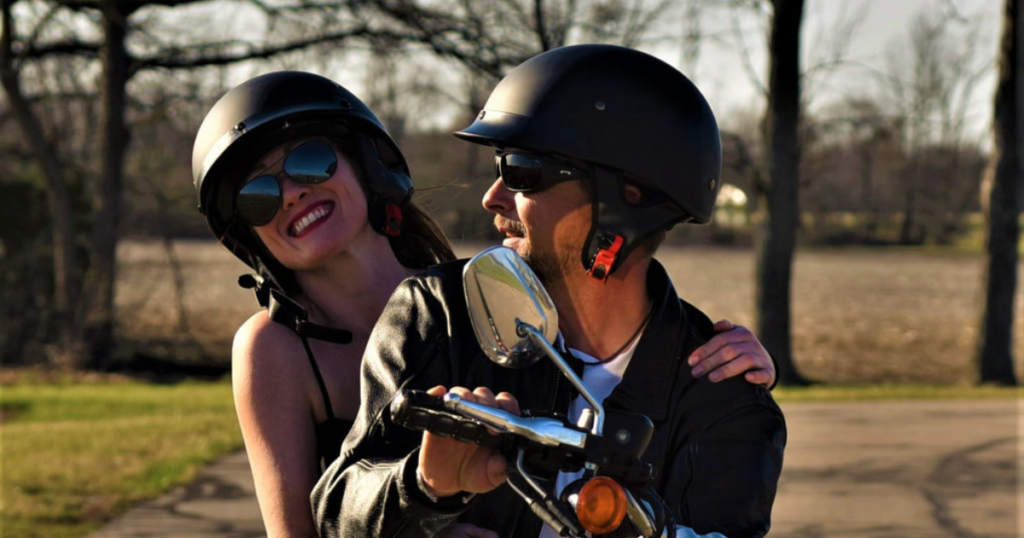
Not surprisingly, these don’t offer the most protection of any type of motorcycle helmet, and they’re also the bare minimum required in most states that have laws about helmets. Their main benefit is that they let in a lot more air, which might be too much if you’re driving on the freeway.
If you want to use a half helmet, you need to wear eye protection. A good alternative is UV-polarized riding safety glasses with a backstrap, but anything is better than nothing. Most motorcyclists who choose half helmets also wear neck and face guards to keep bugs and dirt from getting in their mouths.
Even though these helmets let in a lot of air, they don’t protect as well as a full-face or 3/4 helmet. Still, you can still find DOT-approved half-helmets.
Pros:
- Makes riding more immersive.
- Facilitates conversation with other riders/people.
- Does not need to be removed to drink, eat, or wipe the sweat off your face.
- Lightweight and easy to wear or remove.
- Provides the best ventilation.
- Cool and attractive look.
Cons:
- Not crash-proof, especially on the face and chin.
- Exposes the rider to extreme weather.
- Riders must wear bandannas, goggles, or faceguards for protection.
5. Off-Road/Dirt Bike/Motocross
Off-road helmets are made for riding away from the streets and on dirt roads, just like their name says. They’re not the best choice for driving in the city or on the highway, but they’re great for places where you need knobby tires.
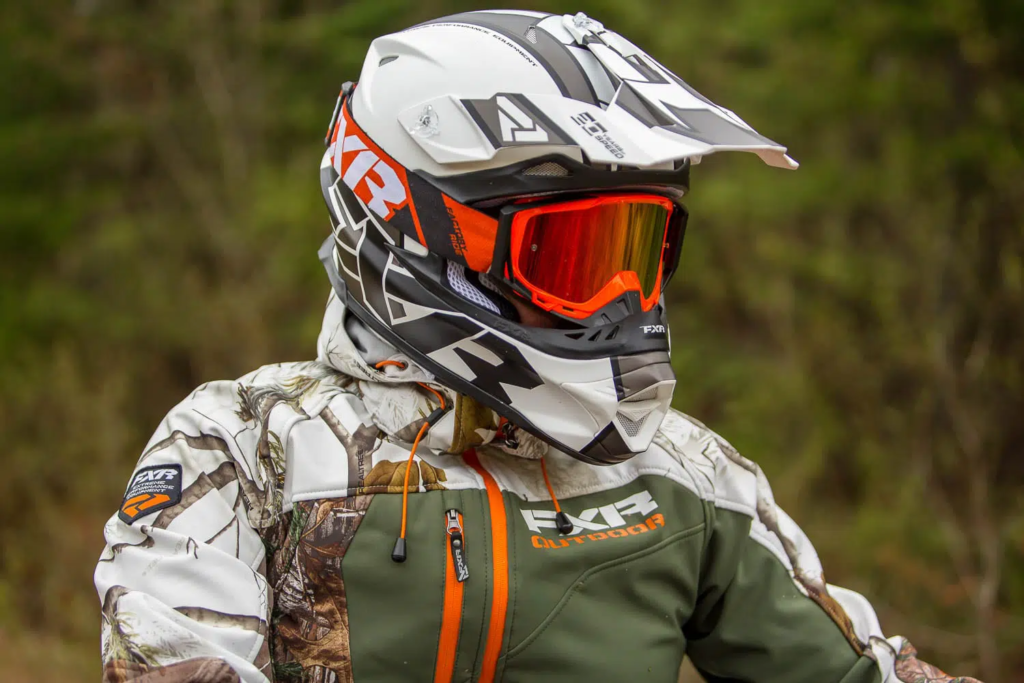
Off-road riding on a motorcycle requires more physical effort, so dirt bike helmets are light and designed to let in as much air as possible so the rider can breathe easily. This is especially important during the warmer months when off-roading.
In addition to having to look cool, dirt bike helmets have less insulation on the inside. The one-piece building gives the chin area the best level of protection.
Since motorcycle helmets aren’t made for high speeds and don’t have wind visors, riders usually wear safety glasses inside the helmet to protect their eyes. This is a good thing because it makes it much easier to take off and clean your safety glasses when everything gets dirty.
Pros:
- Goggles and sunglasses fit inside.
- An extended chin bar improves airflow and breathing.
- Wide sun peak shields eyes.
- Lightweight reduces head and neck fatigue, especially on long rides.
Cons:
- Not usually visored.
- Little cold insulation.
6. Dual-Sport/ADV/Enduro/Crossbreed
Crossover, ADV, Hybrid, and Enduro are some of the other names for dual sport helmets. They help riders switch between riding on the road and riding off the road.
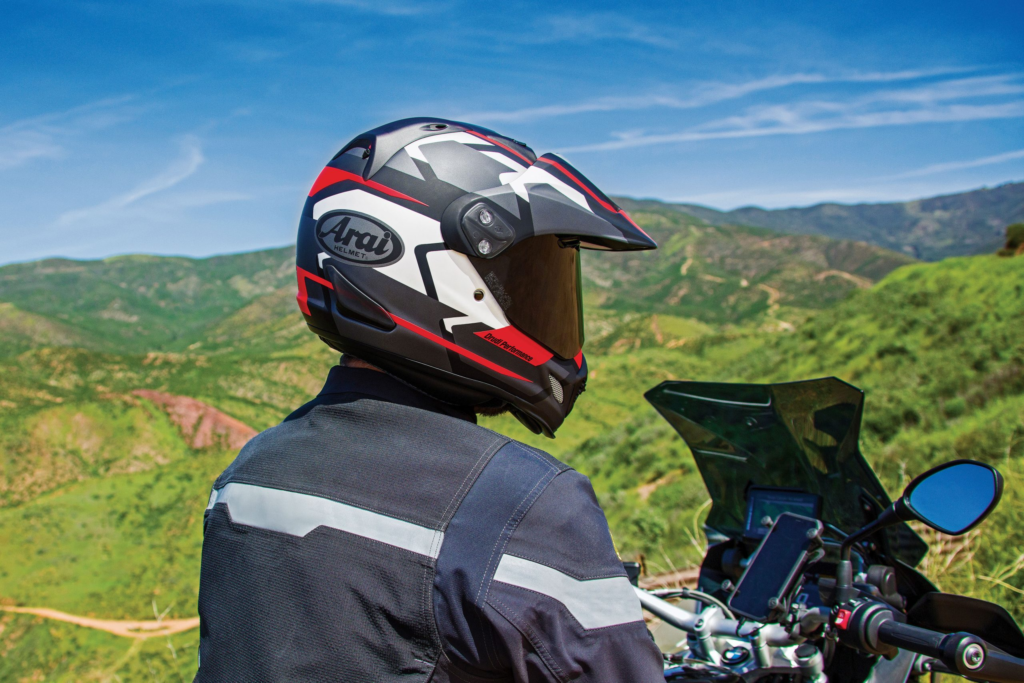
This kind of motorcycle helmet looks like an off-road helmet from the outside. Most of them have a big visor that is made to be aerodynamic. The chin bar of a dual sport helmet is also long, but not as long as the chin bar of an off-road helmet. Like many full-face helmets, the inside of a dual sport helmet has more padding, which makes riding more comfortable for the rider.
They are easy to carry, get to the point, don’t have any extra features, and are ready for some exciting rides. Dual sports motorcycles are made to be able to handle the road as well as dirt and trails, so you need a helmet that can handle that as well.
The eye port will look like a dirt helmet and be much bigger than one on a full-face or modular helmet, so you can always see as much of the road and the controls of the bike as possible.
A dual sport helmet’s chin bar is often bigger and lower, like a dirt bike helmet. Even though it’s not as big as an off-road helmet, it keeps some of the wind and road noise out.
It’s perfect that you can use the visor on the street and flip it up to use goggles off-road. This is what a dual-sport motorcycle is meant to do.
Pros:
- The flip-up visor lets you wear goggles off-road.
- An integrated chin bar protects the jaw and chin.
- A wide sun peak protects the eyes and face from bright sunlight.
- Better sound insulation than full-face helmets.
Cons:
- Rich features and multiple configurations make it more expensive than other helmets.
- Less ventilated than dirt bike helmets.
- Heavy but lighter than full-face helmets.
7. Smart Helmets
While a rider’s safety is of the utmost importance, anything that can be done to make the experience of riding a bike more enjoyable is always appreciated. The safety of drivers and pedestrians on the road is only one of many benefits that can be gained from wearing a smart helmet.

Driving is made safer and more convenient with the help of a variety of additional cutting-edge features, some of which include connectivity via Bluetooth, emergency buttons, voice assistance, and tracking systems.
The majority of modern motorcycle helmets come equipped with components that let riders listen to music, record videos, take photos, and make and accept phone calls without having to use their hands. Batteries or solar panels can be used to power the electronics in smart helmets, making them another environmentally friendly option.
Pros:
- Upgraded hardware and padding to prevent accidents.
- Connects to smart devices for hands-free riding.
- Navigation, entertainment, and communication systems make driving easier.
Cons:
- Features may distract riders while driving.
- Pricier than other helmets.
What Materials Are Helmets Made of?
Plastic is by far the most widely used material; however, there are many other options, including fiberglass, Kevlar, and carbon fiber, that can also be purchased. Even so, it is essential that we clarify that this is not your run-of-the-mill plastic when we talk about plastic. It has been meticulously crafted to ensure that it satisfies the safety requirements.
These are among the most well-liked because they are among the lightest and also provide an excellent balance between the weight and the amount of durability they offer. As a result, they are one of the most popular.
The thick additional padding foam can be found beneath the plastic covering. When it comes to these helmets, the foam padding isn’t of the highest quality, and it tends to break apart whenever there is a collision.
On the other hand, fiberglass possesses a high degree of adaptability. These take in a good deal of impact and are able to withstand additional stress and force than plastic ones. Additionally, it is a lightweight material, but as we have previously mentioned, it is more durable and flexible than any other material used in the production of road helmets.
When it comes to high-performance auto racing models, you’ll find some materials that are significantly more robust and sturdy than others. The exterior covering of these typically consists of Kevlar and carbon fiber in the majority of cases.
These are fantastic for absorbing the high impact that would otherwise shatter a conventional helmet into a million pieces. Versions made of Kevlar and carbon fiber are recommended for individuals who prioritize their safety above all else.
When selecting a product, the type of riding you do, in addition to the type of road you ride on, should be your first consideration. Your individual preferences and requirements, in addition to your own preferences, will determine which of these two materials is most suitable for you.
Basic Parts of a Helmet
Outer Shell
The outside part of the helmet is the outer covering. It is usually made of carbon fiber, Kevlar, polycarbonate, or plastics that have been molded. It can also be a mix of these things. Its job is to hold the head in place in case of abrasion or impact.
Face Shield/Visor
This is a safety feature that helps keep dust, dirt, and bugs away from your eyes and face. Most of these can be taken off, so they are easier to clean or replace.
Influence Absorbing Liner
The EPS impact-absorbing liner is often found on the inside of the outer covering. Its purpose is to absorb shock and redirect power in case of an accident.
Padded Convenience Layer
The lining is there for safety and security, while the padding is there for comfort. No matter what kind of helmet you choose, the place where your head rests while you put it on is the same.
This layer is usually made of open-cell foam and covered with a material that pulls moisture away from the skin. It should fit right and be resistant to sweat and smells.
Chinstrap
It helps keep the helmet on your head and keeps it in place as you ride. If you’ve put your chin strap on correctly, you should be able to fit only two fingers between your chin and the strap.
Cheek Pads
Not all of the types we talked about earlier have cheek pads. Most of the time, you’ll find them in 3/4 and full-face helmets.
These rest on your cheeks and can be taken off to make cleaning much easier. The pads are like the comfort liner in that they add some extra protection and help keep the helmet in place.
Vents
The ventilation system is incredibly important for both safety and general comfort. They keep your head cool and help sweat and smells evaporate for as long as possible. A good vent can open and close, so you can change how much air flows through it depending on the weather.
Conclusion
You can choose any helmet mentioned above that fits your needs. Although these helmets differ from one another, they all have specific purposes. Before buying one for yourself, you can determine its pros and cons to find the right one for yourself. However, not just that, you need to make sure that it fits you perfectly. Only then can the helmet best serve its purpose.

